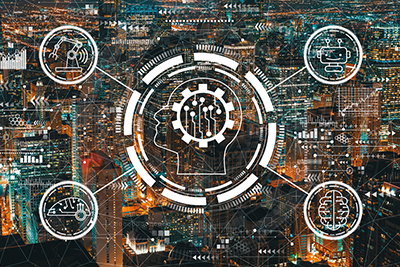
Manufacturers have been finding more creative ways to use machine vision technology as camera quality goes up and costs go down. And thanks to deep learning, cameras are now getting smarter, making machine vision even more useful throughout many industries.
What Is Deep Learning?
Deep learning employs neural networking to process huge data sets. It then uses complex algorithms to help an automated system perform a task. A deep learning AI can learn without the need for human supervision, greatly increasing efficiency.
An advantage of deep learning is its ability to scale. As neural networks get larger and are trained with more data, their performance increases. This makes deep learning exceptionally useful for tasks like object identification, speech recognition, and translation. This form of artificial intelligence (AI) can boost everything from image processing to custom advertising.
How Deep Learning Is Used in Machine Vision
Deep learning has solved problems with image classification, image reconstruction, object detection, and more. With a task like image processing, thousands of images are uploaded to a data set. For an application like detecting cancerous tumors, the system can quickly compare an image to its data set of diseased and healthy tissue and offer a diagnosis fast.
Deep learning also lets manufacturers perform improved quality control. Armed with a data set of “good” and “bad” parts, deep learning machine vision systems reject defective parts with high accuracy. The data can even be used to adjust a manufacturing process on the fly to eliminate defects from subsequent parts.
Even food processors use deep learning. At one major bakery, the machine vision system uses deep learning to determine which baked goods are just the right color, size, and shape. A data set full of images of burnt, undercooked, and perfect products ensures consistency in the baked goods every time.
How Deep Learning Is Changing Machine Vision
New processing units are expanding the benefits of deep learning to machine vision. One new computing technology referred to as “inference on the edge” lets the camera do most of the work instead of only sending an image back to a central server for processing. A pre-trained neural network lets complex analysis take place within the camera itself.
Deep learning is providing many advantages to machine vision systems. Without the need to always consult a server, deep-learning-equipped machine vision systems decrease latency, lower bandwidth requirements, increase reliability, and boost security and privacy.
Deep learning is also making machine vision systems more compact and easier to ship. Single chips can handle tasks that once required dedicated servers. Handheld devices or devices mounted to drones offer machine vision systems more flexibility and mobility than ever before.
Let the specialists at Phase 1 Technologies help you pick the right high-performance image sensor for your machine vision system!
